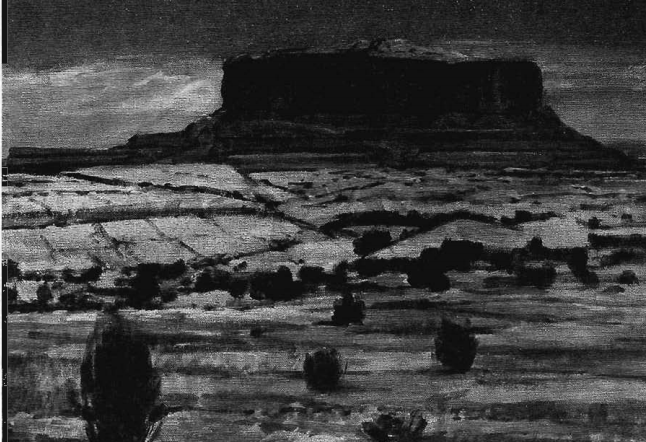Articles/Essays – Volume 27, No. 4
The Continuing Quest for the Historical Jesus
Whoever can give his people better stories than the ones they live in is like the priest in whose hands common bread and wine become capable of feeding the very soul, and he may think of forging in some invisible smithy the un created conscience of his race.
—Hugh Kenner
In 1975 I enrolled in the divinity school at the University of Chicago, where I hoped to earn a Ph.D. under Norman Perrin, a distinguished British New Testament scholar. But a call I made at the same time to the head of the LDS Church Education System in Salt Lake City stopped me cold in my tracks. He told me that if I wanted to teach New Testament for the church I could do so with a Ph.D. in physics or family counseling— anything but a degree in New Testament studies. That attitude has created a vacuum in serious New Testament studies among Latter-day Saints. One way to fill this void is to become a member of the Westar Institute of Sonoma, California, whose goal, among others, is to expose the public to serious biblical scholarship.
At the October 1993 meeting of the Jesus Seminar a spirited debate among New Testament scholars and other participants arose over a proposal to convene a canon council to determine if books should be added to or deleted from the Bible. Several participants referred to Mormonism as an example of the need for a flexible canon. Others expressed concerns that those trained in scholarly disciplines should not enter what they saw as the realm of the churches. Others felt that scholars have a duty to determine that the canon reflects the best research available. For a variety of reasons, the issue was tabled for future consideration.
One of the purposes of the Jesus Seminar is for scholars to present and discuss material on the historical Jesus. The particular focus of the October 1993 meeting was to determine the historical core of the narratives that portray Jesus as a healer. Once the discussion on each paper was completed, votes were taken by both fellows (scholars) and associates (non-scholars). Participants chose a color that represents the probability that a particular saying or narrative actually came from the historical Jesus. This voting presumes that the biblical text contains creative changes and additions that are not part of the historical core. Mor monism from its beginning has also held that biblical texts were edited and modified.
The discipline that studies how each gospel modifies and molds its sources for its own purposes is called “redaction criticism.” “Tradition criticism” treats the history of a text from its original setting through various stages of redaction or editing. “Form criticism” is the discipline that examines the literary form of a particular passage and the historical set ting from which it arose. These terms should be kept in mind while reading the following two essays from the October 1993 Jesus Seminar. These two papers summarize the conclusions reached by these disciplines in examining a particular healing narrative.
The first article, by Daryl D. Schmidt of the religion department at Texas Christian University, examines the narratives of healing on the sabbath. The second article, by W. Barnes Tatum of Greensboro College, analyzes the story of the healing of Simon’s mother-in-law. Each scholar uses the disciplines cited above in his analysis. Their primary concern is to determine if there is a historical core to the story. Schmidt’s essay introduces the problem faced by the Jesus Seminar. Jesus as healer is at tested in more than one early source. On historical grounds alone one must accept the idea that Jesus healed, or at least was believed to perform healings. Yet when we examine particular healing narratives, we find evidence that leads us to conclude that the narratives themselves were either redacted or fabricated. So our dilemma is accepting Jesus as a healer with no specific instance of healing to point to. Schmidt’s article details this dilemma in the instance of the healings on the sabbath. He also presents important material on the first-century setting of the Jewish religious debate regarding healing on the Sabbath. Tatum’s es say suggests why the particular healing narrative he examines probably has a historical core.
Each author presented his paper with recommendations for voting on the historical core of the passage he examined. Votes were taken, both on the narratives as a whole and on elements within the narratives. The following color codes were used in voting:
RED The passage is a fairly reliable account of a historical event.
PINK The passage reflects the historical Jesus in its core or is based on a historical event.
GRAY The passage contains minimal historical traces.
BLACK The passage is largely or entirely fictive.
This same colored system of voting is used to determine the probability of a particular statement regarding the passage; black means the statement is probably fictive and unreliable; red indicates that the statement is virtually certain; pink means that the statement is probably reliable; and gray means that the statement is possibly reliable but may be unreliable.
Below are Schmidt’s and Tatum’s separate essays, their recommendations for voting, and some of the resulting votes by participants.


 Back to full Issue
Back to full Issue

